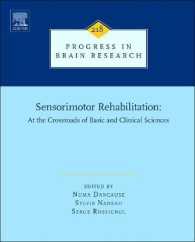Full Description
The Neuro-Ophthalmology Survival Guide, Third Edition is a practical, symptom-based, 'how-to' guide to neuro-ophthalmology for all trainee and practising ophthalmologists, optometrists, and physicians whose practice includes patients with eye or brain issues. Each chapter focusses on a specific clinical symptom and includes an introduction to the clinical assessment of a symptom; an examination checklist; a management flowchart to be followed; clinical diagnostic criteria checklists; and further information on the diseases that can cause the symptom with a brief discussion of appropriate management.
A practical and accessible handbook for the ophthalmologist, optometrist, or other physician without a specialist interest in neuro-ophthalmology
Simplifies a subject that is often a cause of litigation against practising ophthalmologists and exam failure for trainees and residents
Aids diagnosis in a field in which mistakes may lead to serious consequences, e.g. patients with brain tumours presenting with blurred or double vision
Uniquely guides the reader from presenting symptoms, through a series of simple but safe flowcharts and checklists, to the necessary tests, diagnosis, and timely treatment
The first chapter presents 20 'golden rules' to keep you and your patients out of trouble
Updates throughout the text include recent advances in diagnosis and treatment for conditions with improved pathophysiological insights; genetic aspects of several conditions and their impact on management; imaging and laboratory tests available for diagnosis of disorders
New self-assessment quizzes to consolidate everyday clinical skills or for exam preparation
More than 60 online videos demonstrate examination techniques as well as abnormal eye movements, eyelid problems and pupil abnormalities
Contents
1. Staying Out of Trouble
2. Neuro-ophthalmic History and Examination
3. Blurred Vision or Field Loss: Not Explained by Visible Ocular Disease-Optic Disc/s Normal, Swollen, Pale, or Cupped
4. Swollen Disc/s, Normal Vision
5. Transient Visual Loss
6. Double Vision
7. Seeing Things
8. Abnormal Movement or Orientation of the Visual World
9. Abnormal Eye Movements Without Visual Symptoms
10. Unequal Pupils
11. Ptosis
12. Facial Weakness or Spasm
13. Unexplained Eye Pain, Orbital Pain, or Headache
-

- 電子書籍
- 明治文化全集 第9巻 法律篇
-

- 和書
- 石油と世界経済






